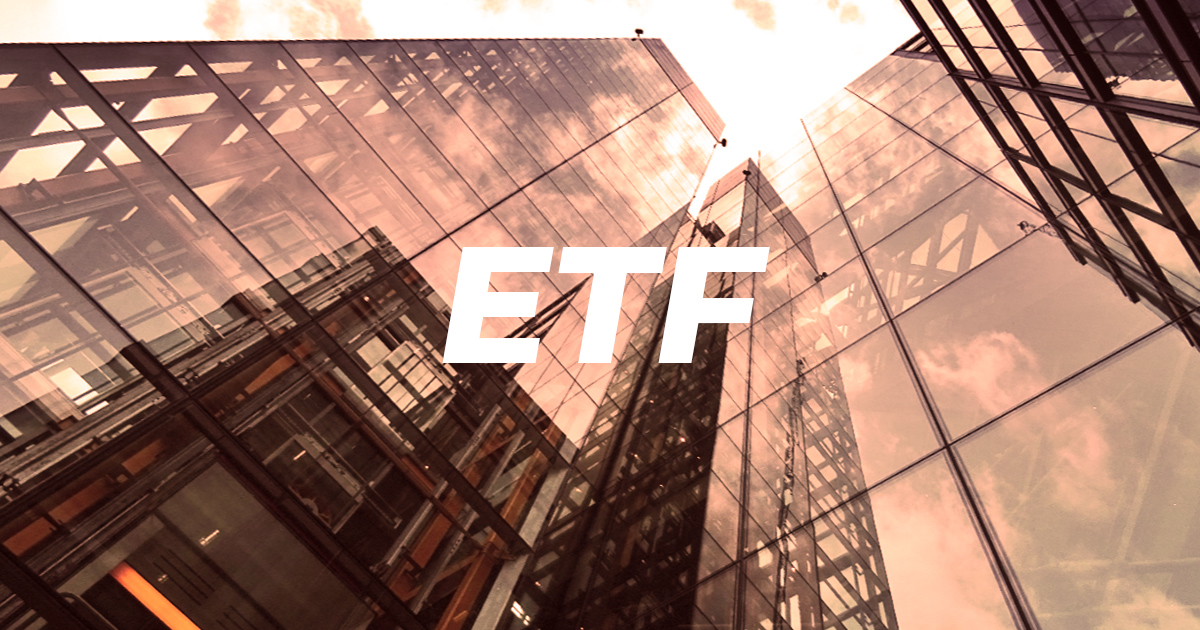
Understanding ETFs: Your Comprehensive Guide to Exchange-Traded Funds
Explore the intricacies of Exchange-Traded Funds (ETFs) in this comprehensive guide. As investment vehicles that blend the traits of individual stocks and mutual funds, ETFs provide a unique opportunity for portfolio diversification and real-time trading. Delve into the types, benefits, drawbacks, and notable examples of ETFs, and gain a profound understanding of their impact on the financial landscape.
Unravel the world of Exchange-Traded Funds (ETFs), investment vehicles that have revolutionized how we interact with the financial market. Blending the characteristics of individual stocks and large-scale mutual funds, ETFs offer a unique opportunity to diversify portfolios while maintaining the flexibility of real-time trading. This article, curated with the keen investor in mind, seeks to delve into the details of ETFs, bringing to light their structure, types, benefits, and drawbacks. Welcome to the Investora universe of ETFs - where we provide a unique investment perspective.
Tip: When getting started with ETFs, consider focusing on the basics first, such as understanding their structure, how they function, and how they differ from other investment vehicles like mutual funds and individual stocks.
A Primer on Exchange-Traded Funds (ETFs)
At the intersection of individual stocks and mutual funds lies an innovation in investment securities, known as Exchange-Traded Funds (ETFs). Born out of the desire to offer flexibility and diversification in one package, ETFs mirror the behavior of various indexes, sectors, commodities, or assets while operating like a common stock on an exchange.
When you think of the pioneering ETFs, one name that undoubtedly springs to mind is the SPDR S&P 500 ETF (SPY), fashioned to mimic the S&P 500 Index, which is still a vibrant market player today. Unlike mutual funds that have a fixed trading time post-market closure, ETFs provide continuous liquidity throughout the trading day, adapting their price in real-time as they are bought and sold.
With their unique ability to own a plethora of assets ranging from stocks, commodities, to bonds, ETFs offer a compelling proposition for diversified investment. They can either be finely tuned to a specific industry or sector or spread across varying industries, making them suitable for different investment strategies.
Interesting Fact: ETFs were originally conceived to offer the benefits of mutual funds while mimicking the flexibility of stock trading. This unique blend has led to their increasing popularity among retail and institutional investors.
What Sets ETFs Apart
What differentiates an ETF from a regular mutual fund or an individual stock is its intrinsic design. Being exchange-traded, ETFs have a fluid price that adjusts during the trading day based on their buying and selling activities. This characteristic differs from mutual funds, which only have a single price set at the end of each trading day.
The extensive spectrum of assets bundled within an ETF makes them a popular option for diversification. Imagine a single investment product containing a multitude of stocks, bonds, and commodities - that's the power of an ETF. Depending on the investor's preferences, an ETF can be tailored to focus on a specific sector or industry or offer a more extensive, global exposure. For instance, an ETF concentrated on banking would encapsulate a diverse range of banking stocks.
Furthermore, ETFs operate as marketable securities with readily available share prices, allowing effortless buying and selling activities. This feature, coupled with their open-ended fund structure in the United States, attracts a large number of investors.
Important: The different types of ETFs cater to various investment strategies, but also come with different levels of risk and complexity. Always align the type of ETF with your investment goals and risk tolerance.
Types of Exchange-Traded Funds (ETFs)
The landscape of ETFs is remarkably diverse, providing investors with a plethora of options each designed to cater to different investment objectives. Whether you're looking to generate income, hedge risk, or speculate on price movements, there's an ETF for every strategy. Here, we'll explore the various types of ETFs available in the market.
Remember: Not all ETFs are created equal. For example, while most ETFs are passive, tracking a specific index, there are also actively managed ETFs where fund managers actively select the fund's holdings to outperform the market.
Passive and Active ETFs
ETFs are broadly classified into passive and active categories. Passive ETFs aim to mirror the performance of a comprehensive index such as the S&P 500 or a niche sector. For example, ETFs focusing on gold mining stocks would contain companies engaged in the gold mining sector.
Conversely, actively managed ETFs deviate from the index-following strategy. Instead, these ETFs rely on portfolio managers who handpick securities to outperform the market. Despite their potential for higher returns, actively managed ETFs usually come with higher costs.
Bond ETFs
For investors seeking regular income, Bond ETFs present an attractive option. These ETFs encompass government, corporate, and municipal bonds, distributing income based on their performance. Unlike traditional bonds, bond ETFs do not have a maturity date, often trading at a premium or discount to the bond's actual price.
Stock ETFs
Stock ETFs offer a way to invest in a specific industry or sector without owning the individual stocks. These ETFs group together stocks from an industry, offering investors a way to tap into its performance while mitigating risks associated with individual stocks.
Industry/Sector ETFs
Industry or sector ETFs are designed to track a particular sector's performance, offering investors the chance to profit from the sector's success without the need to research individual companies. They offer the potential for profit during industry upswings, while their diversified nature can protect against severe losses during downturns.
Commodity ETFs
Commodity ETFs enable investors to gain exposure to commodities like oil or gold without needing to store the physical goods. These ETFs diversify portfolios and offer a hedge during stock market downturns, providing a safety net for investors.
Currency ETFs
Currency ETFs track the performance of currency pairs, both domestic and foreign. These ETFs are versatile, used for hedging, diversification, or speculation based on geopolitical and economic developments.
Inverse ETFs
Inverse ETFs are designed to profit from a downturn in the market. By short-selling stocks, these ETFs aim to deliver gains when the market falls, providing a counterbalance in a declining market.
Leveraged ETFs
Leveraged ETFs are designed to amplify the returns of an underlying index using financial derivatives. They promise returns of multiples (such as 2x or 3x) of the daily index returns, introducing the potential for higher profits and higher risk.
Interesting Fact: There are even thematic ETFs available, designed to capitalize on long-term societal trends, such as technological advancements, clean energy transition, or demographic shifts.
In the intricate landscape of investing, ETFs emerge as versatile and innovative investment vehicles. They present investors with the unique opportunity to diversify their portfolio across multiple assets while maintaining the flexibility to trade in real-time. With a myriad of ETF types available, investors can choose an investment strategy that aligns best with their financial goals and risk tolerance. As the world of finance evolves, ETFs will continue to play a pivotal role in shaping the future of investment strategies.
The Perks and Drawbacks of ETFs
Like every investment product, ETFs come with their own set of advantages and disadvantages that an investor must carefully consider.
Perks of ETFs:
- Diversification: With a single ETF, investors can access a wide array of stocks, bonds, or commodities, which spreads risk and increases potential for returns.
- Flexibility: ETFs can be traded in real-time throughout the day, much like individual stocks.
- Lower costs: Compared to mutual funds, ETFs typically have lower expense ratios and broker commissions.
Drawbacks of ETFs:
- Trading costs: Each ETF trade can incur a brokerage commission, which can add up if you trade frequently.
- Potential for mispricing: Although rare, the price of an ETF might deviate from the net value of its underlying assets.
- Liquidity issues: Some thinly traded or niche ETFs Leveraged ETFs are controversial due to the risks involved and should be used with caution.
Tip: Use ETFs to gain exposure to different sectors or regions without having to buy each individual security. This can provide a convenient and cost-effective way to diversify your portfolio.
Important: ETFs, while offering a wealth of advantages, can carry significant risks, particularly complex types like leveraged and inverse ETFs. Ensure you thoroughly understand the ETF you're investing in and it aligns with your investment strategy.
Notable Examples of ETFs
Exchange-Traded Funds (ETFs) come in a wide variety of types, allowing investors to gain exposure to practically any market segment, investment theme, or strategy. Let's take a look at some of the most well-known and significant ETFs in the market:
- SPDR S&P 500 ETF (SPY): This is one of the most widely traded ETFs in the world. SPY seeks to provide investment results corresponding to the price and yield performance of the S&P 500 Index. Its diversified exposure to the large-cap U.S. market makes it a popular choice for investors.
- Vanguard Total Stock Market ETF (VTI): VTI aims to track the performance of the CRSP US Total Market Index, which represents nearly 100% of the investable U.S. stock market. It's known for its low expenses and broad exposure.
- Invesco QQQ ETF (QQQ): This ETF tracks the Nasdaq-100 Index, which includes 100 of the largest domestic and international non-financial companies listed on the Nasdaq Stock Market. It's a popular choice for investors seeking exposure to innovative companies.
- iShares MSCI EAFE ETF (EFA): EFA offers exposure to developed market equities in Europe, Australasia, and the Far East. It's a commonly used ETF for investors seeking international diversification.
- Vanguard FTSE Emerging Markets ETF (VWO): For those interested in investing in emerging markets, VWO provides exposure to stocks of companies located in emerging markets around the world, such as China, Brazil, Taiwan, and South Africa.
- ARK Innovation ETF (ARKK): This is an actively managed ETF that invests in companies poised to benefit from disruptive innovation like artificial intelligence, robotics, energy storage, DNA sequencing, and blockchain technology.
Remember, these are just a few examples of the vast array of ETFs available to investors today. Depending on your investment goals, there are likely to be several ETFs that could be appropriate for your portfolio.
Tip: Looking at notable ETF examples can provide a good sense of the breadth and diversity of options available to you as an investor.
Interesting Fact: The SPDR S&P 500 ETF (SPY), launched in 1993, was the first ETF introduced in the US and is still one of the most heavily traded ETFs today. It paved the way for the widespread adoption and innovation of ETFs.
ETFs emerge as a versatile, innovative, and crucial part of the modern investment world. With their unique blend of diversification, flexibility, and real-time trading, ETFs cater to various investment strategies, risks, and goals. They present a plethora of options ranging from sector-specific to commodity-based, passive to active, and much more. However, like any investment vehicle, ETFs come with their share of advantages and potential pitfalls. As financial markets evolve, ETFs continue to shape and redefine investment strategies for the keen investor.
Key Points:
ETFs combine characteristics of mutual funds and individual stocks, offering both diversification and real-time trading.
The types of ETFs range from sector-specific and commodity-based to passive and active, catering to various investment goals.
ETFs provide transparency and lower costs compared to mutual funds but may come with trading costs and potential for mispricing.
ETFs can be complex and carry different levels of risk, making understanding each type's unique features and potential drawbacks crucial.
As with any investment, a thorough assessment of financial goals, risk tolerance, and market conditions is essential when investing in ETFs.
- Share this article





